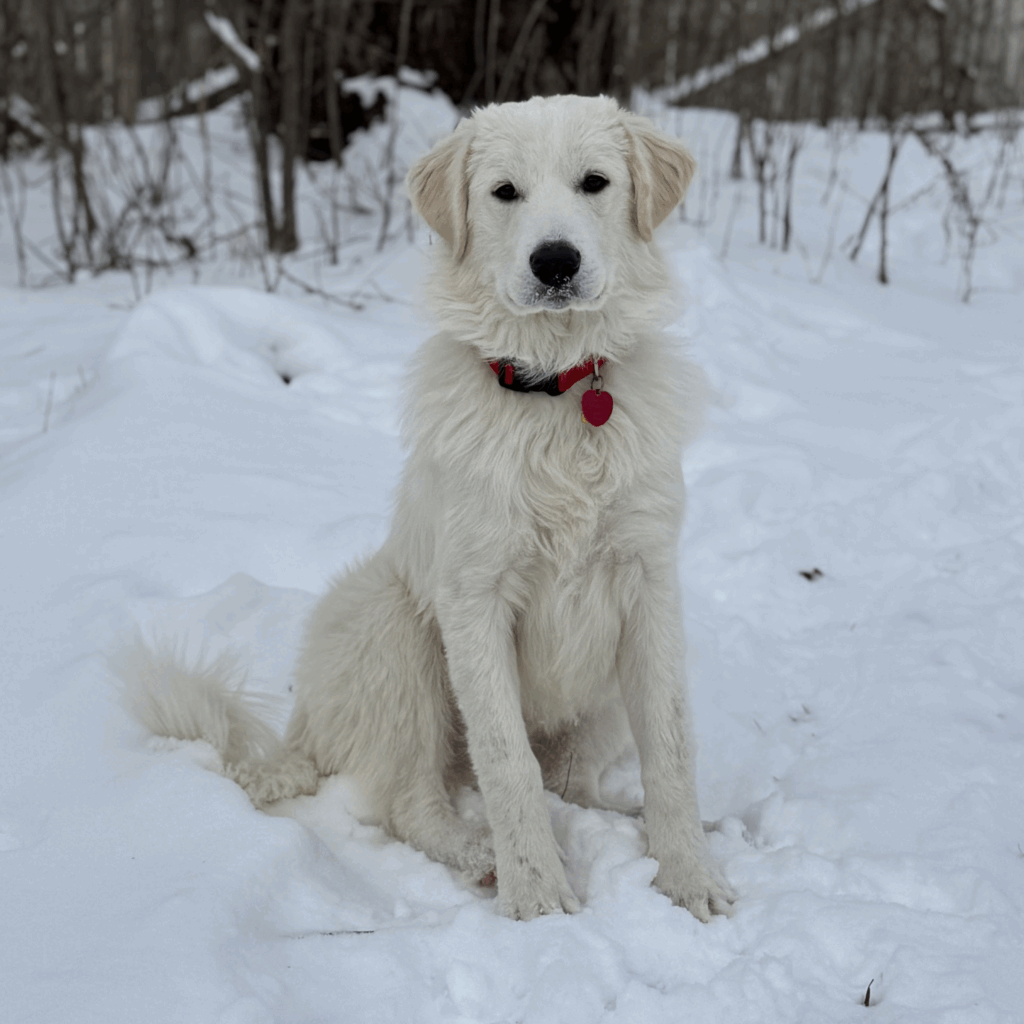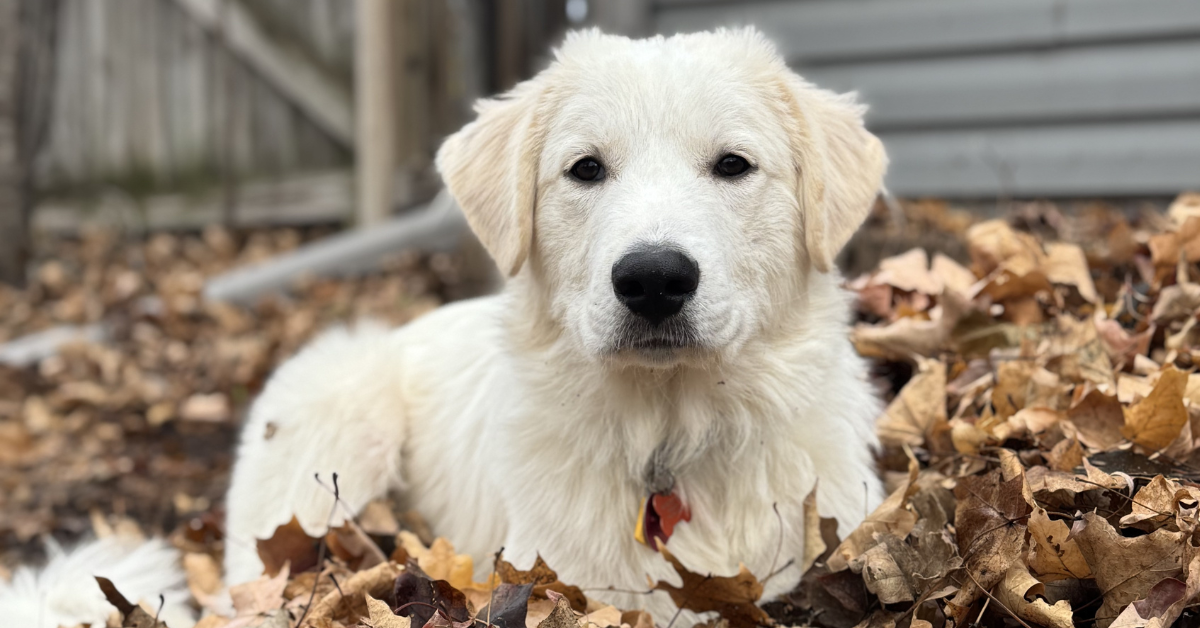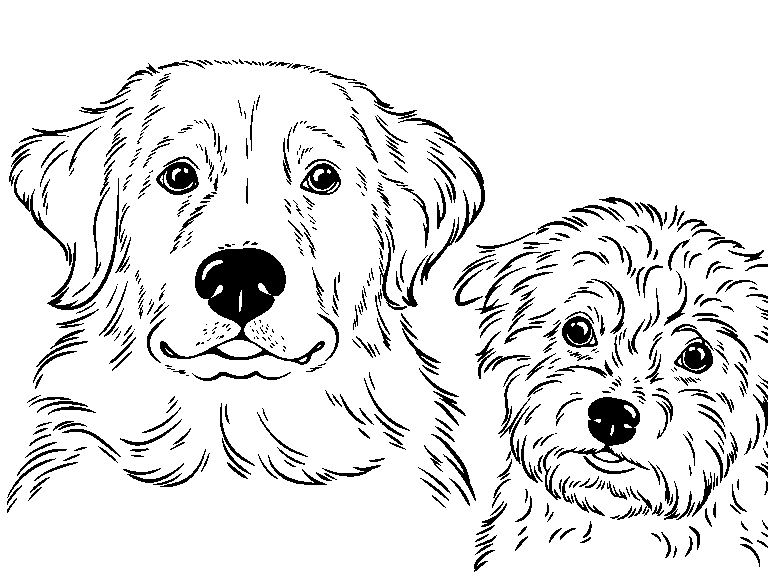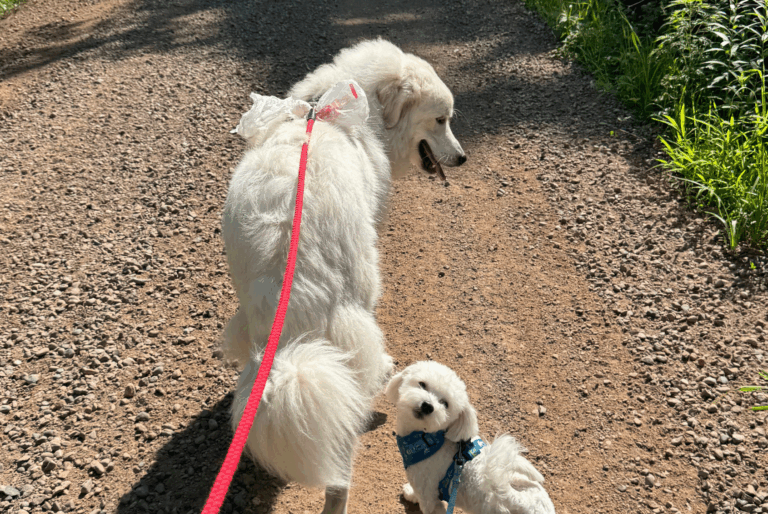The Great Pyrenees: A Gentle Giant 101 Guide
Coming in at over 85 pounds, the Great Pyrenees is the fifth largest dog breed in the world. Despite its massive size, this majestic breed brings soft emotions and an insistence that they can be your favorite lap dog. This calm demeanor means this breed works well in either of its primary roles – whether guarding livestock or serving as a favorite family pet.
The History of the Great Pyrenees
Thousands of years ago, the Great Pyrenees was bred in the Pyrenees Mountains between Spain and France (hence its name) to protect livestock, such as sheep, from predators. In this role, they gained independence because they would make decisions to protect their livestock without any human help.
In the 17th century, the Great Pyrenees breed was declared to be the “Royal Dog of France.” While the breed moved from the mountains to the palace, they never lost their ability to serve as guardians for livestock and their families.
Since then, the breed has continued to serve as the gentle guardian for livestock around the world. It has found a home in many homes around the world, too. It is not known how many Great Pyrenees live in the world today, but the popularity of the breed continues to grow.
Great Pyrenees: A Quirky, Gentle Dog

Part of the reason why the Great Pyrenees breed continues to grow comes from their very unique personalities.
For one, they are a calm and gentle dog. This comes from their experience in working with livestock, and being trained to stay calm even in difficult situations. They bring this to the home – and because of their ability to stay calm, they are a great family dog; even in families with little ones.
An independent streak complements the calm, serene nature of the dog. This comes from the breed’s ability to guard its livestock and make decisions without guidance from the farmer or other human. For some pet owners, this independent streak can be a form of frustration – unlike other breeds, the Great Pyrenees will decide to do what it wants, when it wants. Maybe they can be convinced to do something with the right treat or motivation, but most likely – you are on their time.
Lastly, it’s important to note that the Great Pyrenees can be quite protective. Again, this comes from their role of working as guardians of livestock against wild predators. But, they can bring this to the home, too, as a pet. This means that they can be excellent guard dogs. However, this often comes with a lot of barking in order to help protect the home and their family.
Breed Overview
As the fifth largest breed in the world, the Great Pyrenees has a large stature. It varies a bit between male and female dogs:
- Male Great Pyrenees will be 27-32 inches in height and at least 100 pounds (with some weighing as much as 160 pounds
- Female Great Pyrenees will be 25-29 inches in height and at least 85 pounds in weight
Beyond their massive size, the Great Pyrenees has some distinct physical features. For one, they have a double dewclaw on their hind legs. This came about because they were out guarding their livestock in all conditions. They needed extra stability and traction to navigate terrain that was often steep and sometimes icy. The double dewclaws gave extra grip when they were on these challenging surfaces.
Their dewclaws are a bit different than what you find with other dogs, mostly because there will be a pad for the dewclaw. This is unusual.
Because of this, it is not recommended that you remove the dewclaw on the Great Pyrenees, It can lead to intense pain. It would feel like if someone cut off your finger or your thumb. In addition, they use their dewclaws for balance.
The Great Pyrenees also has a double coat. This fluffy coat helps them stay warm in even the worst conditions. The double coat creates a unique scruff around their neck, almost as thick and long as a lion’s mane. Each Great Pyrenees will have a bit of a different look, with some keeping their puppy fur for much of their lives.
Great Pyrenees Health & Wellness
The Great Pyrenees has an expected lifespan of 10-12 years. While they are quite sturdy and healthy breeds, they do experience some common health issues. These health issues include:
- Hip & Elbow Dysplasia: When a joint develops abnormally, the bones are unable to fit together as they should. Instead, they grind together and can cause significant pain and result in arthritis. This tends to happen most often in Great Pyrenees’ hips and elbows.
- Bloat (Gastric Dilatation-Volvulus): Because of their deep chest, Great Pyrenees are more likely to suffer from bloat. This can cause serious issues, if the bloat causes the stomach to twist.
- Bone Cancer (Osteosarcoma): Over 95% of all bone tumors are classified as osteosarcoma. This often appears in middle-aged and older dogs and are prevalent among large and giant breeds like the Great Pyrenees.
Daily Care of Your Great Pyrenees

To keep your Great Pyrenees healthy, there are some preventative measures that can be taken. These include:
- Diet and weight management by feeding them a high-quality diet with food that is designed for large breeds. This will help regulate their growth and make sure that they are less likely to develop dysplasia. Their weight should be monitored throughout their life.
- Bloat prevention focused on feeding them smaller meals instead of a large meal. This could be spread into two or three smaller meals throughout the day. In addition, any exercise should be planned at least an hour before or at least an hour after eating to prevent any stress on their digestive system.
- Exercise appropriate for their size by focusing on engaging them in activities that consider that they are a giant breed. Long walks or patrolling along the fence in a yard could work well.
- Regular veterinary appointments ensures that they get the medical care that they need. This includes any screenings for joint problems or any other conditions that are common for Great Pyrenees. If there are signs of limping or other discomfort, a vet should be seen immediately to understand if it points to a more serious condition.
- Joint supplements may help to support joint health as your Great Pyrenees ages. These could include supplements like glucosamine or chondroitin.
Great Pyrenees Care Tips
Caring for your Great Pyrenees often isn’t much different than what you do for any other dog. However, given the uniqueness of this breed, there are a few things that must be addressed different than what you would do with other breeds.
The double coat requires continual grooming. This coat is extra thick to make sure that they stay warm when they are traversing mountains to protect their herds. There are special brushes that can be used to brush the double coat.
I have heard from groomers that sometimes, you won’t notice any mats on the fur that you can see – but the undercoat will be covered in mats. Paying attention to visible mats and removing those (this is a great brush to help) and keeping up with regular brushing is important.
As mentioned in the previous section, the Great Pyrenees isn’t a high energy dog that requires miles and miles of running each and every day. But, they do require some exercise. A walk and playing fetch, or throwing a toy around, can be a good way to give them the exercise that they need.
Lastly, because they are such big dogs, training will be extremely important. Their size and weight means that if they are a jumper, they could easily knock someone over. Making sure they can sit, stay, and lay on command will be important. It will also be a good idea to introduce them to other dogs so they are not reactive when they encounter them on walks. “Leave it” can also be another essential command for your Great Pyrenees.
In Conclusion: Is a Great Pyrenees Right For You?
All dogs aren’t a great fit for all people. While a Great Pyrenees has amazing qualities, they may not be a good fit for your family or lifestyle. Their sheer size should be appreciated and considered; and their living space should be considered as well.
If you live in a more urban area, a yard with a fence may be important – and depending where you get your Great Pyrenees, there may be a requirement that you have a fenced in home.
You should also take into consideration the need for exercise, as well as the grooming and personal care needs to ensure that you are able to accommodate.
With these things in mind, you’ll be prepared to understand whether a Great Pyrenees is a fit for you.





